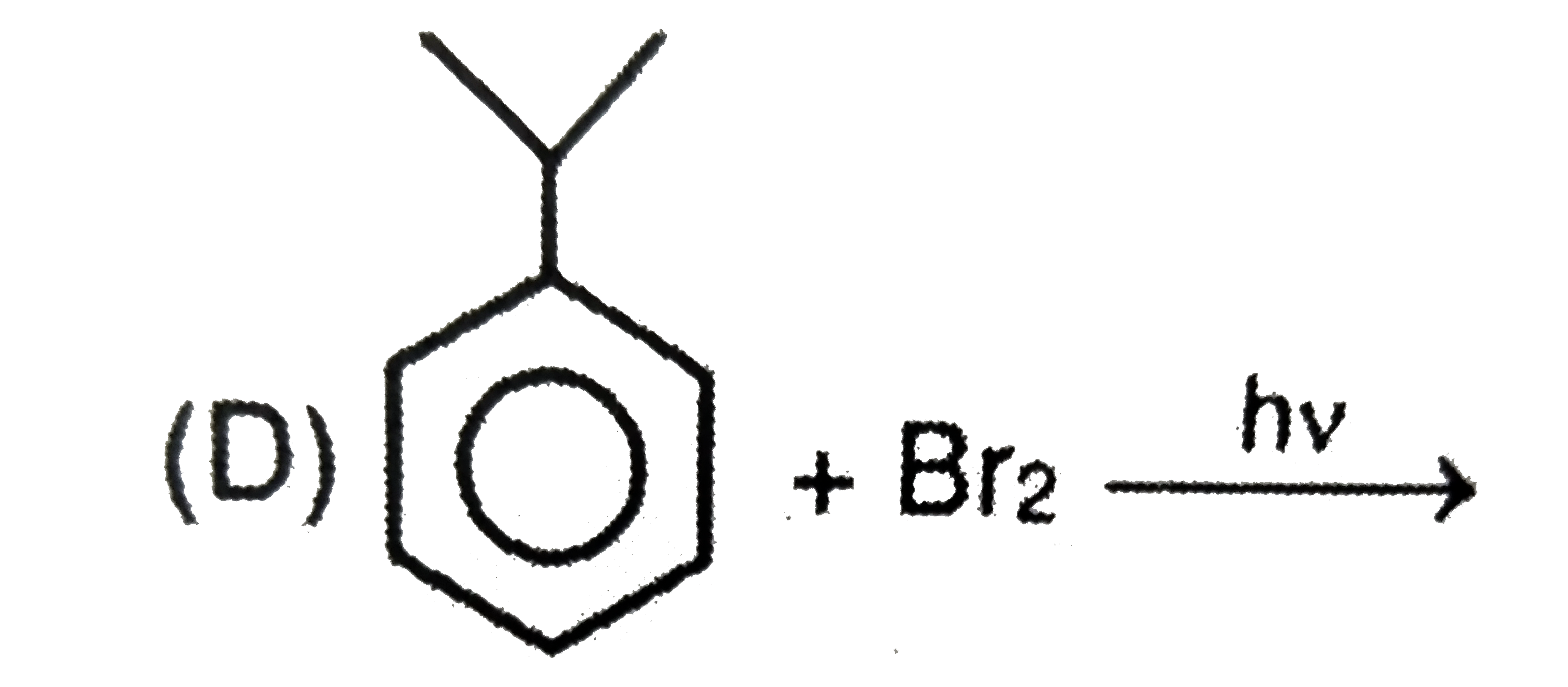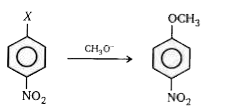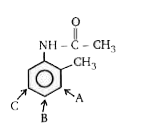Electrophilic aromatic substitution can be seen in which of the following cases ?




The correct Answer is:A, B, C
To determine in which cases electrophilic aromatic substitution occurs, we will analyze each of the provided options step by step.
Step 1: Understanding Electrophilic Aromatic Substitution
Electrophilic aromatic substitution (EAS) is a reaction where an electrophile replaces a hydrogen atom on an aromatic ring. This type of reaction typically requires the presence of an electrophile and a catalyst, often a Lewis acid.
Step 2: Analyzing the Options
1. Option A: Friedel-Crafts Alkylation
- In this reaction, a benzene ring reacts with an alkyl halide in the presence of a Lewis acid (like AlCl₃). The alkyl group replaces a hydrogen atom on the benzene ring, forming a new alkyl-substituted aromatic compound.
- Conclusion: This is an example of electrophilic aromatic substitution.
2. Option B: Friedel-Crafts Acylation
- Similar to alkylation, this reaction involves the acylation of a benzene ring using an acyl halide and a Lewis acid. The acyl group replaces a hydrogen atom on the aromatic ring.
- Conclusion: This is also an example of electrophilic aromatic substitution.
3. Option C: Bromination of Aromatic Compounds
- In this case, an aromatic compound reacts with bromine (Br₂) in the presence of a halogen carrier (like FeBr₃). The bromine acts as an electrophile and substitutes a hydrogen atom on the aromatic ring.
- Conclusion: This is another example of electrophilic aromatic substitution.
4. Option D: Aliphatic Halogenation
- This reaction involves the substitution of hydrogen in an aliphatic compound (not aromatic) with bromine in the presence of light. This is a free radical mechanism and does not involve an aromatic ring.
- Conclusion: This is not an example of electrophilic aromatic substitution.
Final Conclusion
Electrophilic aromatic substitution can be observed in Options A, B, and C. Option D does not involve aromatic compounds and is therefore excluded.
Summary of the Solution
- Options A, B, and C are examples of electrophilic aromatic substitution.
- Option D is not an example of electrophilic aromatic substitution.
Electrophilic aromatic substitution (EAS) is a reaction where an electrophile replaces a hydrogen atom on an aromatic ring. This type of reaction typically requires the presence of an electrophile and a catalyst, often a Lewis acid.
1. Option A: Friedel-Crafts Alkylation
- In this reaction, a benzene ring reacts with an alkyl halide in the presence of a Lewis acid (like AlCl₃). The alkyl group replaces a hydrogen atom on the benzene ring, forming a new alkyl-substituted aromatic compound.
- Conclusion: This is an example of electrophilic aromatic substitution.
- Similar to alkylation, this reaction involves the acylation of a benzene ring using an acyl halide and a Lewis acid. The acyl group replaces a hydrogen atom on the aromatic ring.
- Conclusion: This is also an example of electrophilic aromatic substitution.
- In this case, an aromatic compound reacts with bromine (Br₂) in the presence of a halogen carrier (like FeBr₃). The bromine acts as an electrophile and substitutes a hydrogen atom on the aromatic ring.
- Conclusion: This is another example of electrophilic aromatic substitution.
- This reaction involves the substitution of hydrogen in an aliphatic compound (not aromatic) with bromine in the presence of light. This is a free radical mechanism and does not involve an aromatic ring.
- Conclusion: This is not an example of electrophilic aromatic substitution.
Electrophilic aromatic substitution can be observed in Options A, B, and C. Option D does not involve aromatic compounds and is therefore excluded.
- Options A, B, and C are examples of electrophilic aromatic substitution.
- Option D is not an example of electrophilic aromatic substitution.
Topper's Solved these Questions
- ORGANIC REACTION MECHANISMS - IIBOOK - RESONANCE ENGLISHCHAPTER - ORGANIC REACTION MECHANISMS - IIEXERCISE - Exercise-2 Part-4
5 Videos
- ORGANIC REACTION MECHANISMS - IIBOOK - RESONANCE ENGLISHCHAPTER - ORGANIC REACTION MECHANISMS - IIEXERCISE - Exercise-3 Part-1
20 Videos
- ORGANIC REACTION MECHANISMS - IIBOOK - RESONANCE ENGLISHCHAPTER - ORGANIC REACTION MECHANISMS - IIEXERCISE - Exercise-2 Part-2
8 Videos
- MOLE CONCEPTBOOK - RESONANCE ENGLISHCHAPTER - MOLE CONCEPTEXERCISE - ORGANIC CHEMISTRY(BASIC CONCEPTS)
27 Videos
- ORGANIC REACTION MECHANISMS-IVBOOK - RESONANCE ENGLISHCHAPTER - ORGANIC REACTION MECHANISMS-IVEXERCISE - APSP PART-3
22 Videos
Similar Questions
Knowledge Check

above reaction is an example of Nucleophilic aromatic substitution. Which of the following halide (-X) is most readily replaced.A_FB−ClC−BrD−IThe electrophilic aromatic substitution proceeds through a :
Afree radicalBsigma complexCbenzyneDcarbeneHalogens are deactivating yet ortho,para directing in electrophilic aromatic substitution. Which statements do not explain this ?
AA combination of inductive electron withdrawal and resonance electron release.BInductive electron withdrawal with no resonance effect.CA combination of inductive electron release and resonance electron withdrawal.DA combination of inductive electron release and resonance electron release.
Sulfonation differs from most of electrophilic aromatic substitution reactions with the fact that the reaction-
View SolutionIn which of the following , replum can be seen ?
View SolutionAlthrough chlorine is an electron withdrawing group, yet it is ortho-para-directing in electrophilic aromatic substitution reactions. Explain why it is so ?
View SolutionReimer-Tiemann reaction introduces an aldehyde group on to the aromatic ring of phenol, ortho to the hydroxyl group. This reacrtion involves electrophilic aromatic subsititution. It is a general method for the synthesis of subsituted salicyladehydes as depiced below:

The electrophile in this reaction is:
View SolutionIn which of the following compound electrophilic aromatic substitution take place in phenyl ring present in left hand side ?
View Solution

